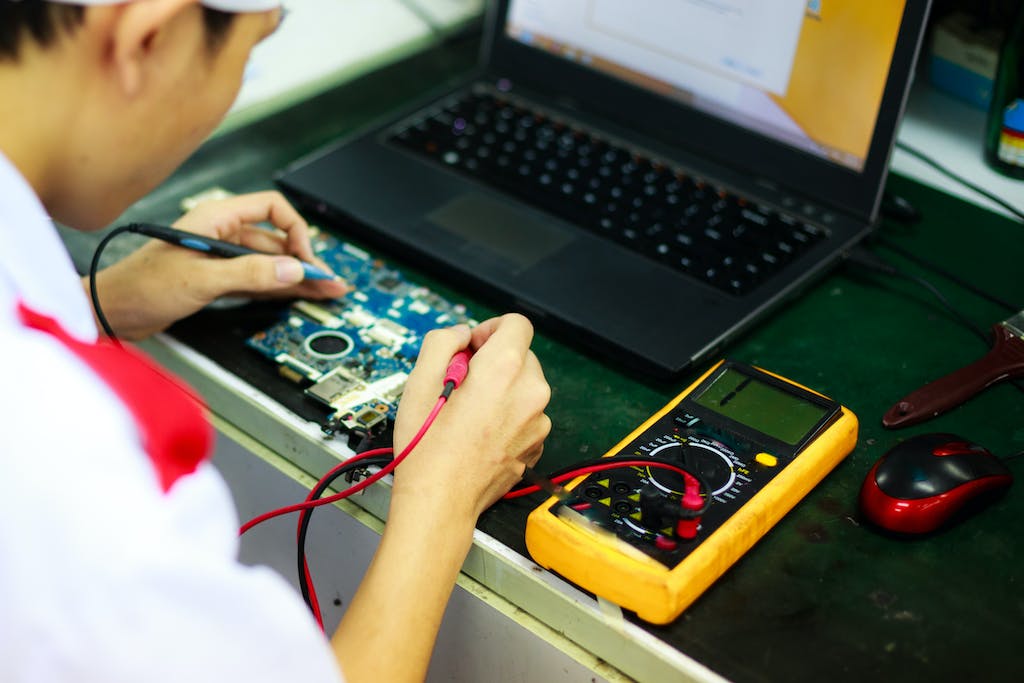Welcome to the fascinating world of Arduino, a playground for hobbyists, and engineers alike. Imagine being able to design and build devices that can interact with the real world around you. That’s exactly what Arduino allows you to do.
But what exactly is Arduino? It’s a term that wears many hats – referring to a specific type of board design, the company manufacturing these boards, and even the vibrant community that has sprung up around boards made by other companies, which function similarly.
What is an Arduino?
At its core, Arduino is an open-source platform designed for building electronics projects. It comprises two main components: a physical programmable circuit board (often called a microcontroller) and a piece of software known as the Integrated Development Environment (IDE). This IDE runs on your computer, allowing you to write and upload computer code to the physical board. It’s this combination of hardware and software that gives Arduino its power and flexibility.

What is Arduino Used For?
Arduino finds its applications in a vast array of fields, from simple DIY home projects to complex scientific instruments. It’s widely used in robotics, home automation, environmental monitoring, and interactive art installations.
The real magic of Arduino comes from its ability to read inputs and turn them into outputs. Whether it’s the light falling on a sensor, a finger pressing a button, or even a message received via Twitter, Arduino can process it and react—be it by activating a motor, lighting up an LED, or sending a notification online.
Chris
This capability opens up a plethora of possibilities, enabling Arduino to interact with a wide array of devices including buttons, LEDs, motors, speakers, GPS units, cameras, the internet, and even smartphones or TVs!


Basic Components and Sensors
An Arduino board might look a little intimidating at first glance, but it’s actually made up of a few key components: a power connector, digital and analog pins, a microcontroller, and a serial connector.
1. A power connector and a serial connector.
2. Pins including digital and analog pins.
3. TX (transmit) and RX (receive) LEDs.
4. Main IC (Integrated Circuit)
Not to forget, there’s also a reset button and several smaller components like an oscillator and/or a voltage regulator, all of which play a part in the board’s functionality.
Advantages of Arduino
One of the key reasons behind Arduino’s massive appeal is its accessibility. The Arduino software is free, the hardware boards are affordable, and both are remarkably easy to learn and use. This accessibility, coupled with Arduino’s flexibility, has fostered a large and active community.
Members of this community contribute code, share project ideas, and release instructions for a myriad of Arduino-based projects, making it an ever-expanding universe of innovation.
Programming an Arduino
When it comes to programming an Arduino, you’ll be using a variant of C or C++ languages, specifically tailored for embedded systems.
The Arduino IDE, which is the heart of the software side, is open-source and written in Java. Despite this, the code you write and upload to the board is in a simplified version of C++.
It’s a common misconception, but the IDE’s Java roots are only related to its development environment, not the programming language used for Arduino projects. The IDE is compatible with Windows, Mac, and Linux, making it accessible to virtually anyone interested in diving into the world of Arduino.
Resources for Learning
Starting your journey into Arduino programming might seem daunting, but there’s a wealth of resources out there. The best place to begin is the official documentation at Arduino website, which is packed with tutorials and guides.
Additionally, platforms like SparkFun offer comprehensive tutorials and project ideas to get you started and inspire your creations.